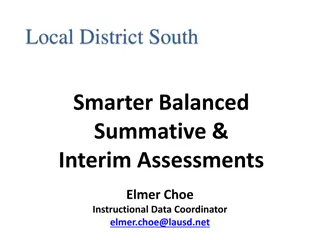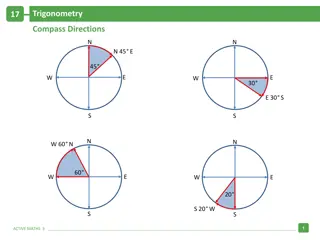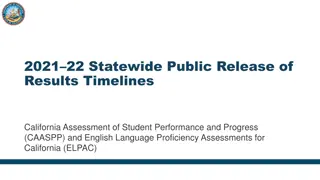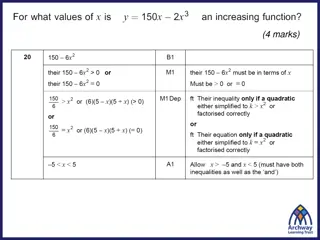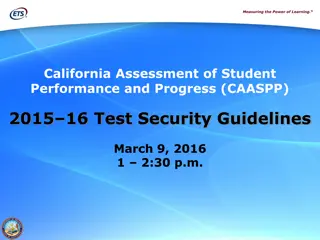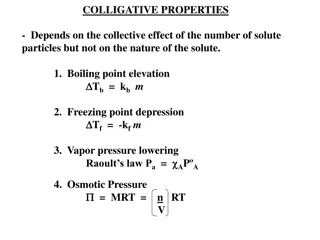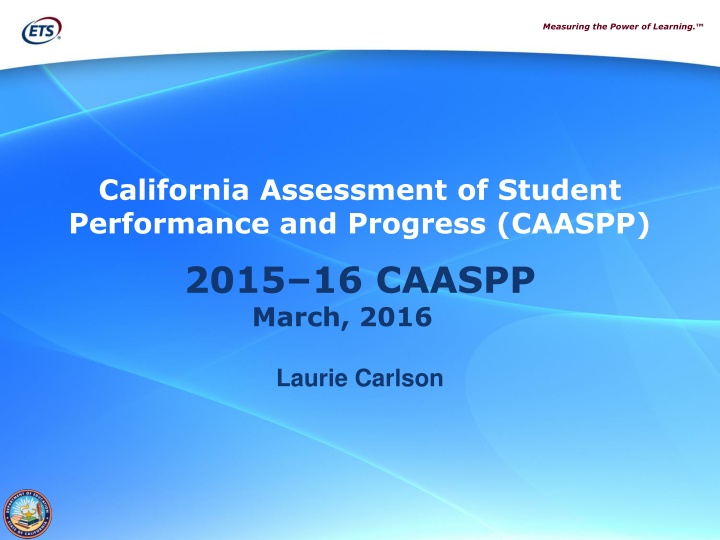
Importance of Measuring Student Learning Progress
Explore the significance of measuring student learning progress through assessments such as the California Assessment of Student Performance and Progress (CAASPP). Discover how these assessments help in preparing students for the future by focusing on adaptability, problem-solving skills, and information integration. Learn about the process of transitioning to new educational approaches, aligning curriculum, and using assessments to track student growth and support needs effectively.
Download Presentation

Please find below an Image/Link to download the presentation.
The content on the website is provided AS IS for your information and personal use only. It may not be sold, licensed, or shared on other websites without obtaining consent from the author. If you encounter any issues during the download, it is possible that the publisher has removed the file from their server.
You are allowed to download the files provided on this website for personal or commercial use, subject to the condition that they are used lawfully. All files are the property of their respective owners.
The content on the website is provided AS IS for your information and personal use only. It may not be sold, licensed, or shared on other websites without obtaining consent from the author.
E N D
Presentation Transcript
Measuring the Power of Learning. California Assessment of Student Performance and Progress (CAASPP) 2015 16 CAASPP March, 2016 Laurie Carlson
Measuring the Power of Learning. We are Preparing for a New Future Our students will live and work in the world of tomorrow We have updated our curriculum to match the demands students will face Tomorrow s need? Workers who are: Adaptable Can apply knowledge to unpredictable problems Can find information, assess its value and integrate it to arrive at creative solutions
Summative Assessment: One Part of an Integrated System
Measuring the Power of Learning. We have been transitioning for several years now: Implementation of the new approach has been a process Teachers have been learning and refining research-based instructional practices The curriculum has been aligned to the CCSS The annual test will give us a measure of our progress
Measuring the Power of Learning. The Assessment is like your child s regular check-up with the pediatrician Provides a consistent check on progress - Is the student meeting expected milestones? Allows teachers and parents to measure growth year to year Provides information that teachers and parents can act on is focused support needed?
Measuring the Power of Learning. Tests Provide Information Information is used to show us where we need to improve teaching Information is used to target support before students fall too far behind The annual test is one measure: Other measures of student learning include classroom tests, projects and formative assessment
Measuring the Power of Learning. Time Allotted For Testing Less than 1% of the school year is spent on the annual statewide test Since the test measures the skills and knowledge we teach all year, there is no focus on test preparation other than experience with the testing interface/tools There s no time limit for the statewide test; students have the time they need to show what they know and can do
Measuring the Power of Learning. What s New about the Test
Measuring the Power of Learning. Assesses Desired Skills Problem Solving Perseverance Application of Knowledge Listening Reading Complex Texts Research Real-world math tasks
Measuring the Power of Learning. New Problem Types: More Engaging, More Challenging - 4thGrade Math Click and Drag animation
Measuring the Power of Learning. New Problem Types: Listening Questions 7thGrade ELA Listen to the presentation Audio glossaries for words above grade level Asks students to provide evidence for answers
Measuring the Power of Learning. Unique Accessibility Features: Example - Pop Up Glossary, Highlighter, Notepad Roll cursor over shadowed words glossary pops up
Measuring the Power of Learning. Student Participation: General All students in grades 3 8 and grade 11 take the Smarter Balanced Summative Assessments with the following exceptions: Students whose IEP team designates the use of the California Alternate Assessments (CAAs) English Language Arts and mathematics tests for students with significant cognitive disabilities English learners who have been enrolled in a school in the United States less than 12 months (ELA only)
Measuring the Power of Learning. Smarter Balanced Summative Assessments PART I: Computer adaptive test (CAT) ELA and mathematics Wide variety of question types. As a student progresses, the difficulty of questions is adjusted on the basis of the student s responses. Answering a question correctly will result in a more challenging question An incorrect answer will generate an easier question
Measuring the Power of Learning. Smarter Balanced Summative Assessments PART II: Performance Task ELA and mathematics. Designed to provide students with an opportunity to apply their knowledge and higher-order thinking skills to explore and analyze a complex, real-world scenario. Teachers will administer a classroom activity 1 day prior to the Performance Task Timing of classroom activity is about 30 minutes
Measuring the Power of Learning. Completion Rules Completion of the Smarter Balanced online assessments is dependent on the student completing both parts of the assessment in each content area: CAT (Math & ELA) Performance Task (Math & ELA) Important: Students who do not complete both parts will not receive an overall score.
Measuring the Power of Learning. Overall Scores 2 Areas, 4 Levels English Language Arts and Mathematics Exceeded the Standard Met the Standard Nearly Met the Standard Has Not Met the Standard
Measuring the Power of Learning. Additional Scores 3 levels, 8 topics English Language Arts 1.Reading 2.Writing 3.Speaking & Listening 4.Research/Inquiry Mathematics 1.Concepts & Procedures 2.Problem Solving 3.Communicating Reasoning 4.Modeling & Data Analysis
Measuring the Power of Learning. Sample Student Score Reports Side A Side B
Measuring the Power of Learning. Parent Support
Measuring the Power of Learning. What can you do to support your child? Prior to Testing - Encourage your children to do their best work - Reassure them that their learning all year has prepared them well - Optional: Try out a practice and/or training test During testing windows, make sure your child - Gets plenty of sleep - Eats breakfast - Attends every day (refrain from Dr. s appt s) - Arrives each day on time
Measuring the Power of Learning. Cumberland Testing Calendar 3rd-5th Grades APRIL 25-29 MATH April 25 CAT Math April 26 Classroom Activity Math April 27 Performance Task Math April 28-29 SBA Math Make ups 3rd-5th Grades MAY 2-6 ELA May 2 CAT ELA May 3 Classroom Activity ELA May 4 Performance Task ELA Part I May 5 Performance Task ELA Part II May 3-13 SBA ELA Make ups 5th Grade Only May 10-11 Science May 10 CST/CMA/CAPA Science May 11 CST/CMS/CAPA Science May 12-13 CST/CMS/CAPA Science Make ups
Measuring the Power of Learning. Practice & Training Tests
Measuring the Power of Learning. Accessing the Practice and Training Tests Students and parents who wish to access the Practice Test and/or Test via an Internet browser will select the button below 1 2 3 Access through http://www.caaspp.org on a Web browser
Measuring the Power of Learning. Smarter Balanced Practice Tests vs. Training Tests Practice Tests Training Tests Provide students with a grade specific testing experience similar in structure and format to the summative assessments Provide students with an opportunity to quickly become familiar with the software and interface features Purpose Each grade: Grade bands: 3 8, 11 3 5 6 8 High school Grade Levels Approximately 30 questions in ELA and 30 questions in mathematics per grade level; includes 1 ELA Performance Task and 1 mathematics Performance Task per grade level Approximately 15 questions per grade band (6 in ELA and 8 9 in mathematics); Performance Tasks are not available Number and Types of Questions All All Universal Tools, Designated Supports, and Accommodations Tests are not scored, however answer keys and scoring rubrics are available Tests are not scored Scoring
Measuring the Power of Learning. CAAs Training Tests Training Tests for CAAs Provide students with an opportunity to quickly become familiar with the test delivery system, question types, and interactions provided in the DFAs Purpose One test each for ELA and mathematics Grade Levels Number and Types of Questions Approximately 5 10 questions for each content area Universal Tools, Designated Supports, and Accommodations All that are available for CAAs Tests are not scored Scoring







